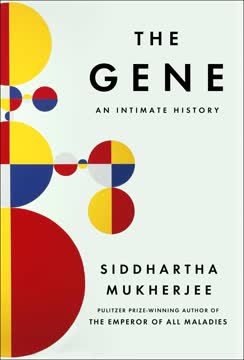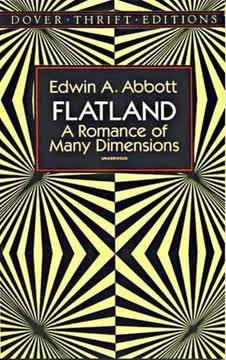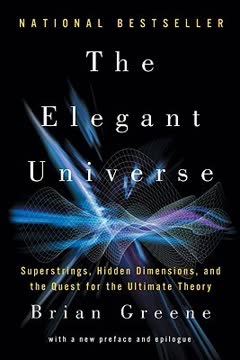Key Takeaways
1. The Standard Model: A Theory of Almost Everything
This one equation describes everything we know about the way matter behaves, except, of course, for gravity.
A unified framework. The Standard Model is a comprehensive theory that explains nearly all known phenomena in particle physics. It describes the fundamental particles and forces that govern the universe, with the notable exception of gravity.
Experimental success. The Standard Model has been rigorously tested and has successfully predicted the existence of particles like the W and Z bosons, as well as the Higgs boson. Its predictions have been confirmed with remarkable precision, making it one of the most successful scientific theories ever developed.
Limitations. Despite its success, the Standard Model has limitations. It doesn't explain dark matter, dark energy, or the matter-antimatter asymmetry in the universe. It also doesn't incorporate gravity, leaving room for further developments in theoretical physics.
2. Quantum Mechanics: The Bizarre Reality of the Subatomic World
It is not a question of whether a theory is philosophically delightful, or easy to understand, or perfectly reasonable from the point of view of common sense. The theory of quantum electrodynamics describes nature as absurd from the point of view of commonsense. And it agrees fully with experiment. So I hope you can accept nature as she is—absurd.
Wave-particle duality. Quantum mechanics reveals that particles can behave like waves and vice versa. This counterintuitive concept is demonstrated in experiments like the double-slit experiment, where particles exhibit interference patterns typically associated with waves.
Probabilistic nature. Unlike classical physics, quantum mechanics deals in probabilities rather than certainties. The quantum state of a particle is described by a wave function, which gives the probability of finding the particle in a particular state when measured.
Measurement and uncertainty. The act of measurement plays a crucial role in quantum mechanics. The Heisenberg uncertainty principle states that certain pairs of physical properties, like position and momentum, cannot be simultaneously measured with arbitrary precision. This fundamental limitation challenges our classical notions of determinism.
3. Special Relativity: Redefining Space, Time, and Energy
Henceforth space by itself, and time by itself, are doomed to fade away into mere shadows, and only a kind of union of the two will preserve an independent reality.
Spacetime unification. Einstein's special relativity theory reveals that space and time are not separate entities but are interwoven into a four-dimensional fabric called spacetime. This concept fundamentally changes our understanding of the universe's structure.
Mass-energy equivalence. The famous equation E = mc² demonstrates that mass and energy are interchangeable. This principle explains phenomena like nuclear fission and fusion, where small amounts of mass can be converted into enormous amounts of energy.
Relativistic effects. Special relativity predicts several counterintuitive effects:
- Time dilation: Moving clocks run slower than stationary ones
- Length contraction: Objects appear shorter in the direction of motion
- Relativity of simultaneity: Events simultaneous in one frame may not be in another
These effects become significant at speeds approaching the speed of light.
4. Quantum Electrodynamics (QED): The Strange Theory of Light and Matter
QED is our first example of a full-blown relativistic quantum field theory.
Field-particle duality. QED unifies the concepts of particles and fields, describing them as different aspects of the same underlying reality. Photons, the particles of light, are viewed as excitations of the electromagnetic field.
Virtual particles. QED introduces the concept of virtual particles that can briefly pop into existence and then disappear, mediating interactions between particles. This explains phenomena like the Casimir effect and contributes to the electron's magnetic moment.
Feynman diagrams. Richard Feynman developed a powerful visual tool for calculating particle interactions in QED. These diagrams represent possible ways particles can interact and provide a method for calculating probabilities of different outcomes.
5. The Quark Model: Explaining the Subatomic Zoo
This was the accomplishment that won two Nobel prizes: on the one hand, the intermediate particles have picked up the mass that is necessary to explain the short-range nature of the weak force; on the other hand, because the masses arise from spontaneous symmetry breaking, the theory remains renormalizable.
Quark composition. The quark model proposes that hadrons (particles that experience the strong force) are composed of quarks. Baryons, like protons and neutrons, consist of three quarks, while mesons consist of a quark-antiquark pair.
Quark flavors and colors. There are six flavors of quarks: up, down, charm, strange, top, and bottom. Each quark also comes in three "colors" (red, green, blue), which are not actual colors but quantum properties related to the strong force.
Explaining particle properties. The quark model successfully explains the properties and behavior of numerous subatomic particles, including their masses, charges, and decay patterns. It provides a framework for understanding the structure of matter at its most fundamental level.
6. Quantum Chromodynamics (QCD): The Theory of Strong Interactions
QCD tells us that each flavor of quark comes in three colors.
Color charge. QCD introduces the concept of color charge, analogous to electric charge in electromagnetism. Quarks carry color charge, which comes in three types: red, green, and blue.
Gluons. The strong force between quarks is mediated by particles called gluons. Unlike photons in electromagnetism, gluons carry color charge themselves, leading to unique properties of the strong force.
Confinement and asymptotic freedom. QCD explains two key features of the strong force:
- Confinement: Quarks are never observed in isolation but always in color-neutral combinations
- Asymptotic freedom: The strength of the strong force decreases at high energies or short distances
These properties explain why quarks are bound tightly in hadrons but behave almost like free particles in high-energy collisions.
7. Electroweak Unification: Merging Electromagnetism and Weak Forces
The amazing electroweak unification was accomplished at this cost: Weinberg and Salam needed to invent four new particles.
Unified theory. The electroweak theory, developed by Sheldon Glashow, Abdus Salam, and Steven Weinberg, unifies the electromagnetic and weak forces into a single framework. This unification reveals that these forces are different aspects of a more fundamental interaction.
Intermediate vector bosons. The theory predicts the existence of three new particles: the W+, W-, and Z0 bosons, which mediate the weak force. These particles were later discovered experimentally, confirming the theory's validity.
Symmetry breaking. At high energies, the electromagnetic and weak forces are indistinguishable. The apparent difference at low energies is explained by spontaneous symmetry breaking, a concept crucial to the Higgs mechanism.
8. The Higgs Mechanism: Giving Mass to Particles
Leon Lederman calls it the God Particle: Without the Higgs there would be nothing in the universe but massless particles.
Symmetry breaking. The Higgs mechanism explains how particles acquire mass through spontaneous symmetry breaking. In this process, the Higgs field acquires a non-zero value throughout space, breaking the symmetry of the electroweak theory.
Mass generation. Particles interact with the Higgs field, and this interaction gives them mass. The strength of the interaction determines the particle's mass – particles that interact strongly with the Higgs field are heavier than those that interact weakly.
Higgs boson. The theory predicts the existence of the Higgs boson, a particle associated with the Higgs field. The discovery of the Higgs boson at CERN in 2012 was a major triumph for the Standard Model and our understanding of mass generation in the universe.
9. Beyond the Standard Model: Neutrinos, Dark Matter, and Dark Energy
About 85 percent of the matter in the universe cannot be accounted for by the particles of the Standard Model.
Neutrino oscillations. Recent experiments have shown that neutrinos can change from one flavor to another as they travel, implying that neutrinos have mass. This contradicts the Standard Model's prediction of massless neutrinos and requires extensions to the theory.
Dark matter. Astronomical observations suggest the existence of dark matter, which interacts gravitationally but not electromagnetically. The Standard Model doesn't account for dark matter, indicating the need for new particles or modifications to the theory.
Dark energy. The accelerating expansion of the universe implies the existence of dark energy, a mysterious form of energy permeating all of space. Understanding dark energy remains one of the biggest challenges in modern physics and cosmology.
10. Grand Unified Theories and Supersymmetry: Seeking Greater Unity
GUTs provide a framework for understanding a great deal of physics beyond the Standard Model.
Grand Unification. Grand Unified Theories (GUTs) attempt to unify the strong, weak, and electromagnetic forces into a single interaction. These theories predict phenomena like proton decay and magnetic monopoles, though neither has been observed yet.
Supersymmetry. This theory proposes a fundamental symmetry between fermions and bosons, predicting that each known particle has a "superpartner" with different spin. Supersymmetry could potentially solve several problems in particle physics and cosmology, including:
- The hierarchy problem (why the weak force is much stronger than gravity)
- The unification of coupling constants at high energies
- Providing a dark matter candidate
Experimental searches. Despite extensive searches, no evidence for supersymmetric particles has been found yet. The LHC and future experiments continue to look for signs of physics beyond the Standard Model.
11. String Theory: A Potential Theory of Everything
String theory is the first theory to bring quantum mechanics and general relativity together.
Fundamental strings. String theory proposes that the fundamental constituents of the universe are not point-like particles but tiny, vibrating strings. Different vibrational modes of these strings correspond to different particles and forces.
Extra dimensions. Most versions of string theory require the existence of additional spatial dimensions beyond the three we observe. These extra dimensions are thought to be curled up or "compactified" at scales too small to detect directly.
Unification potential. String theory offers the potential to unify all fundamental forces, including gravity, into a single framework. However, the theory faces challenges:
- It lacks testable predictions at currently accessible energies
- There are multiple versions of the theory, with no clear way to choose between them
- The mathematical complexity of the theory makes concrete calculations difficult
Despite these challenges, string theory remains an active area of research due to its potential to provide a "Theory of Everything."
Last updated:
Review Summary
The Theory of Almost Everything receives mostly positive reviews for its clear, accessible explanation of the Standard Model of particle physics. Readers appreciate Oerter's historical approach and ability to convey complex concepts without heavy mathematics. Many find it an excellent introduction for laypeople, though some struggle with the more abstract later chapters. The book is praised for its comprehensive overview, but criticized for occasional oversimplification and outdated information regarding recent discoveries like the Higgs boson.
Similar Books










Download PDF
Download EPUB
.epub digital book format is ideal for reading ebooks on phones, tablets, and e-readers.




